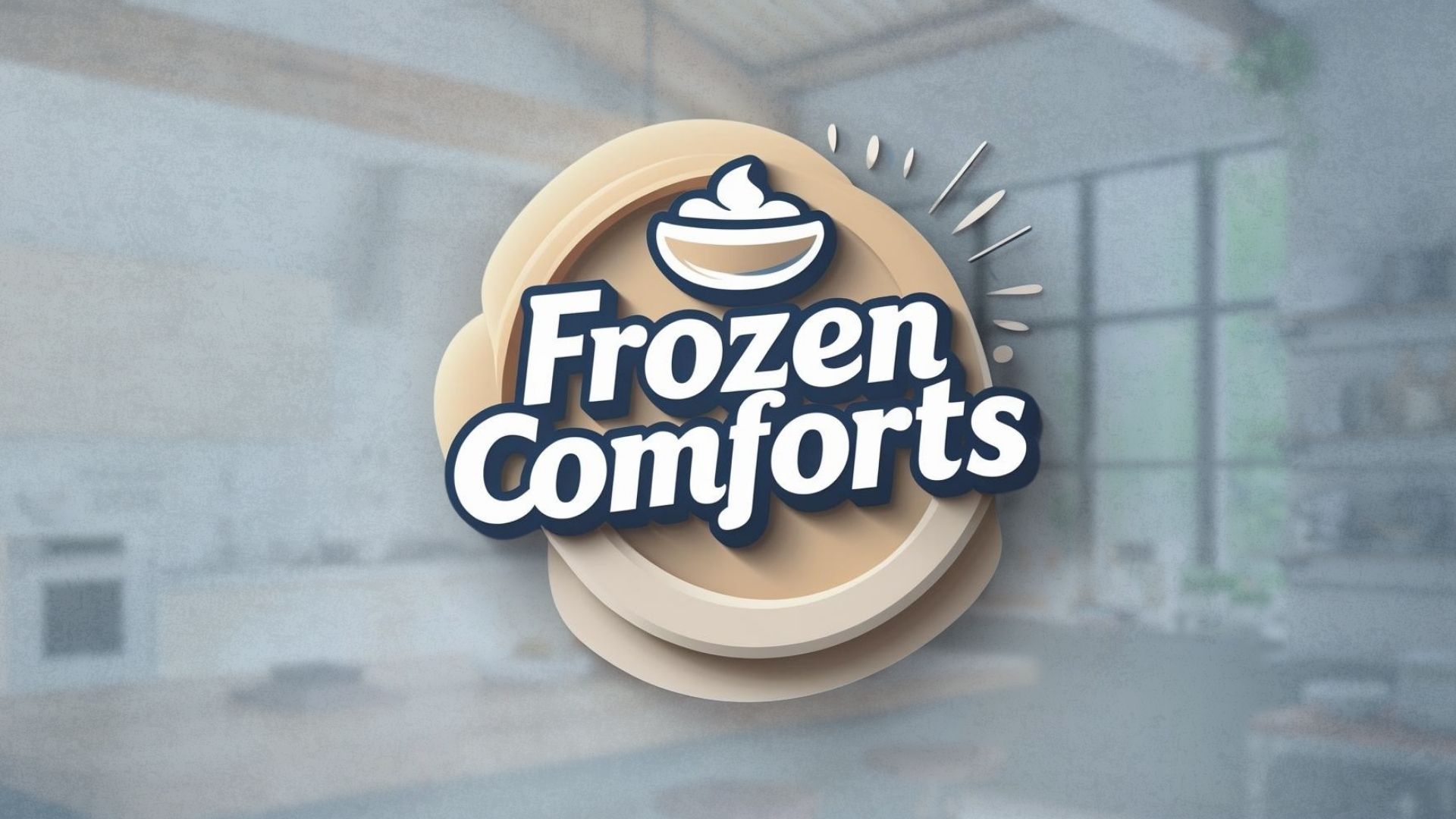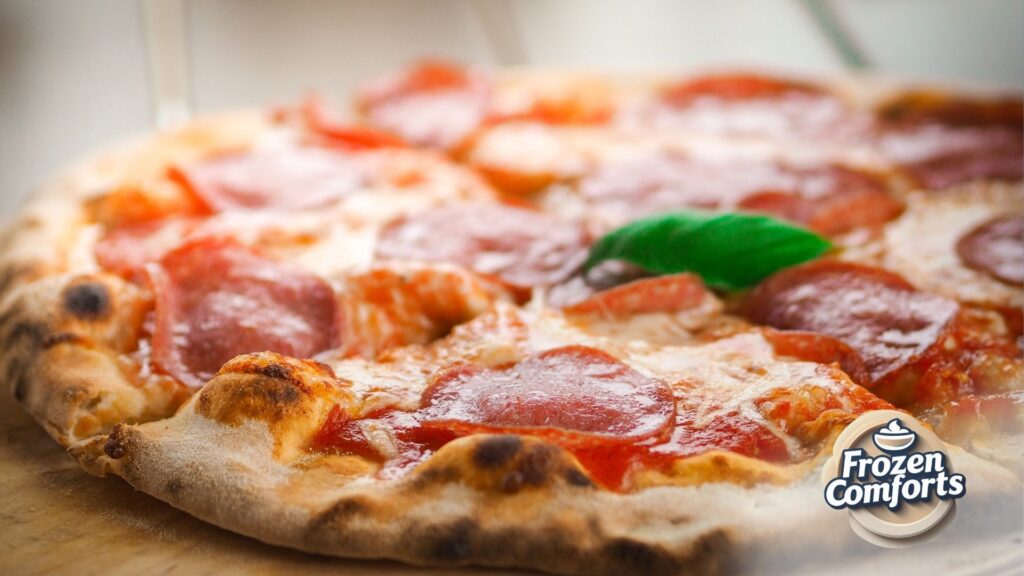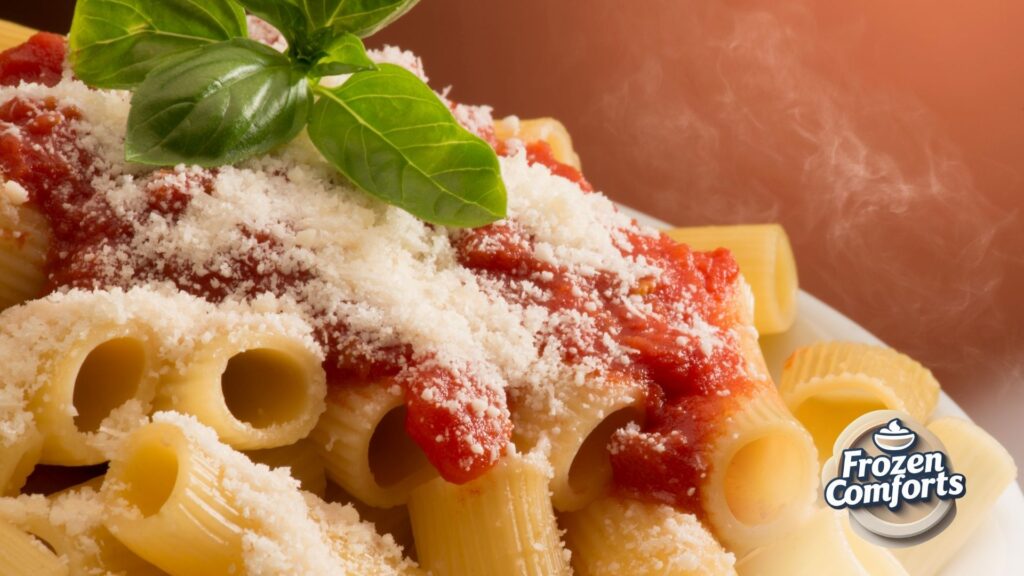
I created brand in about two hours. Want to learn more? I’ll tell you all about it. But first, let’s talk about why I created it. In a volatile economy where traditional consumer behavior becomes less predictable, one thing remains consistent: the emotional pull of comfort food. Frozen Comforts is a hypothetical company concept rooted in the insight that economic downturns often correspond with a spike in frozen food sales—particularly premium comfort foods like pizza and mac and cheese. This case study explores the viability, strategy, and positioning of Frozen Comforts, a direct-to-consumer (DTC) frozen food brand built for uncertain times.
The Market Insight
Experts outlined a recurring economic phenomenon: frozen pizza sales surge when consumer confidence drops in a Business Insider piece by Emily Stewart. Whether due to inflation, tariffs, or general financial anxiety, consumers trade restaurant meals for “luxury at home” alternatives—like frozen pies with premium toppings or better-for-you ingredients.
“This happens every sort of downturn,” said Craig Zawada, chief visionary officer at Pros Holdings. “They’re replacing eating out with having a good frozen pizza at home.”
From the Great Recession to the COVID-19 pandemic, the numbers speak volumes:
- 2009: Frozen food sales rose 3.1% during the recession.
- 2020: Frozen pizza revenue jumped from $5.8B to $6.6B.
- 2024: Despite slowed growth, U.S. frozen pizza sales still hover at $6.5B.
The data reveals an emotional and economic truth: when consumers “nest,” they seek ease, affordability, and indulgence—factors that define Frozen Comforts’ value proposition.

The Concept: Frozen Comforts
Frozen Comforts would operate as a digitally native vertical brand (DNVB), shipping chef-crafted comfort foods directly to consumers. Offerings would include:
- Premium frozen pizzas with classic flavors and toppings to evoke familiarity and convenience.
- Mac & cheese varieties (classic and gluten-free cauliflower)
- Dessert comforts like mini pies and ice cream to top them off
All items would be sold in multi-packs or subscription boxes, with seasonal drops. Recipes focus on high-quality, recognizable ingredients with clear nutritional labeling to appeal to modern health-conscious eaters.
Core Audience:
- Millennials and Gen Xers facing budget constraints
- Parents looking for quick family meals
- Remote workers craving convenience without compromise
Strategic Positioning
Rather than competing head-to-head with DiGiorno or Red Baron on shelf space, Frozen Comforts thrives in a lane between nostalgia and wellness:
- Emotional Appeal: Meals that feel homemade and indulgent
- Economic Logic: Cheaper than takeout, better than fast food
- Branding Play: Honest, cozy, and slightly cheeky—think Oatly for your oven
Recession-Proof Distribution Strategy
- DTC Website (frozencomforts.com) – The brand’s anchor with full product selection, blog content on “comfortology,” and a loyalty program.
- Retail Partnerships – Boutique grocers, urban bodegas, or Whole Foods test pilots.
- Bulk Delivery & Subscriptions – Discounted family boxes targeting suburban consumers and stay-at-home parents.

The Economic Moat
What protects Frozen Comforts from being just another flash-frozen brand?
- Brand as IP: Comfort-first branding builds emotional loyalty, allowing for future expansion (e.g., candles, cozywear).
- Niche Expertise: Hyper-focus on comfort foods during economic dips = category dominance.
- Agile R&D: Leverage customer feedback for limited-run flavors and nostalgic drops tied to seasonal trends or cultural moments.
Final Thought: An Antidote to Anxiety
In times of collective uncertainty, consumers will trade down—but not all the way down. They want affordability with dignity. Frozen Comforts lives in this exact space. It’s not just about what’s on the plate—it’s about what that plate represents: security, warmth, and just a little bit of indulgence.
“People nest when they’re nervous,” said investment banker Alexander Chafetz.
“And nothing says nest like a warm, perfectly cheesy frozen pizza.”







